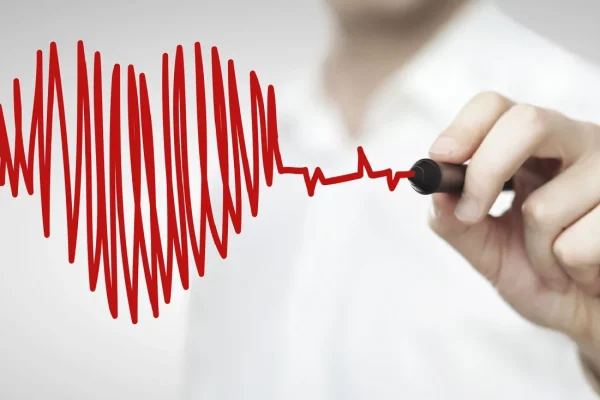
01 Apr Bladder Cancer: What You Need to Know
Bladder Cancer: What You Need to Know
By Island Hospital | Apr 1, 2024 3:00:00 PM
Do you know that bladder cancer is the 10th most common cancer worldwide?
In 2022 alone, more than 600,000 people globally received this diagnosis, and tragically, over 220,000 lives were lost to this disease.
However, a bladder cancer diagnosis doesn’t have to be a life sentence.
With early medical intervention, you can always overcome this challenge and reclaim your health and well-being. In this blog post, we’ll comprehensively explore the facts about bladder cancer.
Whether you’re a patient, caregiver, or simply want to be an informed advocate, this guide will equip you with vital knowledge about confronting and conquering this formidable disease.
What is Bladder Cancer?
Bladder cancer is a cancer that begins in the bladder – the hollow, muscular organ located in the pelvic region that stores urine.
This disease arises when the cells lining the bladder undergo abnormal and uncontrolled growth, resulting in tumors.
Types of Bladder Cancer
Bladder cancer can be categorized in two ways:
1. Type of Bladder Lining Cell where the Cancer Starts
The general term for cancer in this group is carcinoma, the cancer in epithelial tissues. Epithelial tissue lines most organs’ internal surfaces and passageways, including the bladder.
There are 5 types of bladder carcinomas:
a) Urothelial Carcinoma (Transitional Cell Carcinoma)
Urothelial cells are also known as transitional cells. These cells can stretch when the bladder fills with urine and shrink as it empties.
This carcinoma is the most common form, accounting for around 90% of bladder cancer cases.
Typically, urothelial carcinoma begins in the inner bladder lining and can spread to the deeper layers of the bladder wall and the fatty tissues surrounding the bladder.
b) Squamous Cell Carcinoma
Squamous cells are thin, flat cells lining the inside of the bladder.
Around 5% of bladder cancers are squamous cell carcinomas. It often arises from long-term inflammation or irritation of the bladder.
c) Adenocarcinoma
Adenocarcinoma, which accounts for 1-2% of all bladder cancers, originates in the glands within the bladder lining that produce mucus.
d) Small Cell Carcinoma
This rare form of bladder cancer, representing less than 1% of cases, begins in the neuroendocrine cells of the bladder.
These cells release hormones into the bloodstream in response to signals from the nervous system.
2. Muscle Invasiveness of the Tumors at the Bladder
Bladder cancers are also categorized based on how deeply the tumor has invaded the layers of the bladder wall.
Here are the 3 main types:
a) Noninvasive
This early stage refers to tumors that are still confined to a small section of the innermost tissue lining or present only on the surface of the bladder.
The tumor has not yet penetrated the deeper layers.
b) Non-muscle-invasive
Making up the majority of cases, non-muscle-invasive bladder cancers have grown beyond the surface but have not yet spread into the muscle layer of the bladder wall itself.
However, the cancerous cells have infiltrated past the inner lining.
c) Muscle-invasive
In this more advanced stage, the tumor has grown through the lining and into the bladder wall muscle. It may also have spread into the fatty layers or tissues of organs outside of the bladder.
Recognizing the Symptoms of Bladder Cancer
Here are some symptoms to help determine whether you have been diagnosed with bladder cancer:
- Blood in the urine (hematuria)
- The most common symptom of bladder cancer.
- Around 80-90% of bladder cancer patients experience this symptom.
- May present as visible blood that discolors the urine or microscopic amounts detectable only through a urinalysis test.
- Pain or burning during urination (dysuria)
- Increased frequency and urgency of urination
- Difficulty initiating or maintaining a steady urine stream
- Persistent urinary tract infections or bladder irritation
- Loss of appetite and weight loss
- Lower back pain on one side
- Fatigue or weakness
In some cases, patients with more advanced bladder cancer that has spread may experience pelvic or bone pain, swelling in the lower extremities, flank pain, or even a palpable abdominal mass upon physical exam.
If you are experiencing any persistent or recurring urinary symptoms, consult your healthcare provider for proper evaluation and diagnosis.
Unraveling the Risk Factors of Bladder Cancer
Whilst the exact cause of bladder cancer is not fully understood, researchers have identified a few factors that may heighten an individual’s risk of developing this disease:
1. Age
The risk of bladder cancer escalates with age, with most cases occurring in individuals over 70 years old.
2. Gender
Males are 4 times more likely to develop bladder cancer than females.
3. Family History
Having blood relatives diagnosed with bladder cancer indicates a possible genetic predisposition.
4. Smoking
Cigarette smoking is the greatest risk factor, accounting for over 50% of cases. The risk increases with heavier, long-term smoking.
Pipes ,cigar, and secondhand smoke exposure also elevates the risk.
5. Occupational Exposures
People who have regular contact with leather, paint, hair dye, as well as aniline dye used in textile and rubber industries, may have higher rates of getting bladder cancer due to regular contact with carcinogenic chemicals.
6. Radiation and Chemotherapy
Previous radiation treatment or use of certain chemotherapy drugs for other cancers can increase bladder cancer risk.
7. Chronic Bladder Inflammation
Recurrent bladder infections, bladder stones, and long-term usage of urinary catheters leading to chronic irritation are linked to a higher incidence of bladder cancer.
8. Other Factors
High consumption of saturated fats, specific herbs, analgesic painkillers, and infection with certain parasites may also contribute to the development of bladder cancer.
Diagnosis of Bladder Cancer
If bladder cancer is suspected, doctors will conduct a number of tests to confirm the diagnosis and determine the extent of the disease.
The diagnostic process of bladder cancer typically involves:
1. Urine Studies
- Urinalysis: Check the appearance, content and concentration of urine
- Urine cytology: Screen urine under a microscope for cancer cells
- Urine culture test: Check for microorganisms that cause infections
- Urinary tumor marker tests: Determine cellular characteristics and markers released by bladder cancer cells into the urine
2. Cystoscopy
This is a primary diagnostic procedure in which a cystoscope (a pencil-sized lighted scope) is inserted through the urethra to view the inside of the bladder and urethra.
This allows the doctor to inspect for tumors or other abnormalities and take biopsy samples if needed.
If the tests above yield a positive result for bladder cancer, you may be required to undergo additional tests to understand the condition further, including:
1. Transurethral Resection of Bladder Tumor (TURBT)
This operation removes small bladder tumors for additional tests. TURBT procedures may also be a treatment, as it eliminates tumors from your bladder before they invade your bladder’s muscle wall.
2. Imaging Tests
- Computed Tomography (CT) scan: Check if cancer has spread into surrounding tissues/organs
- Magnetic Resonance Imaging (MRI) test: Get detailed images of your bladder
- Chest X-ray and bone scan: Check for the spread of cancer cells to lungs and bones
How to Treat Bladder Cancer?
Several different treatment modalities are used for bladder cancer, depending on the stage and characteristics of the tumor. The treatment may involve one method or a combination approach.
For bladder cancer in its early stages, the treatment options include
1. Chemotherapy
Chemotherapy utilizes powerful chemicals to kill cancer cells in your body.
For early-stage cases, chemotherapy drugs can be delivered directly into the bladder through a catheter. This intravesical approach targets cancer cells in the bladder without damaging other healthy tissues.
2. Transurethral resection of bladder tumor (TURBT)
This procedure removes early-stage, noninvasive tumors from your bladder.
For bladder cancer in its advanced stages, the treatment options include:
1. Chemotherapy
In this stage, chemotherapy drugs are given orally or intravenously to circulate throughout the body via the bloodstream.
This systemic approach helps the medications reach and destroy cancer cells that may have spread beyond the bladder region. It is often used in combination with other treatments, such as surgery or radiation.
2. Immunotherapy
This treatment triggers your immune response to attack cancer cells. There are different types of immunotherapy:
-
- Bacillus Calmette-Guérin (BCG): This is a vaccine that stimulates your immune system against the bladder cancer cells
- PD-1 and PD-L1 inhibitor therapy: This treatment allows your immune system to recognize bladder cancer cells and attack them
3. Radiation Therapy / Radiotherapy
In this approach, high-energy radiation is used to destroy cancer cells in the bladder region.
It can be used as an alternative to bladder removal surgery in some cases or combined with chemotherapy and TURBT.
4. Targeted Therapy
Targeted therapy attacks the mutated proteins in bladder cancer cells while sparing most healthy cells.
5. Radical Cystectomy
More advanced cases may require a radical cystectomy – surgical removal of the entire bladder, surrounding lymph nodes, and other neighboring organs that have become cancerous.
After cystectomy, urinary diversion will be done to reroute urine out of the body.
Navigating these bladder cancer treatment options can be overwhelming, but you don’t have to go through it alone.
At Island Hospital, our team of dedicated cancer specialists is here to guide you every step of the way.
Our oncology experts have extensive experience in diagnosing and treating a wide range of cancers, including bladder cancer.
Contact us today to discuss a personalized treatment plan with our oncology specialists.
Living with Bladder Cancer
Being diagnosed with bladder cancer can be overwhelming, but there are steps you can take to cope and maintain your quality of life throughout treatment and beyond.
1. Follow a Healthy Lifestyle
Eating a balanced, nutrient-rich diet focusing on lean proteins, fruits, vegetables, whole grains and high-fiber foods can aid in recovery and manage treatment side effects like digestive issues.
Regular gentle exercise, as tolerated, may also help reduce stress and boost your overall well-being.
2. Seek Support
Don’t go it alone. Lean on your loved ones or connect with others who understand what you’re going through in a bladder cancer support group to obtain emotional support and coping strategies.
3. Manage Physical Changes
Depending on your treatment, you may need to adapt to changes in how you pass urine. This could involve caring for a urostomy bag, internal urine pouch or neobladder (new bladder).
Ask your care team for guidance on properly managing these new circumstances.
4. Address Intimacy Concerns
Bladder cancer and its treatments can impact sexual health and intimacy.
Being open with your partner, using vaginal dilators, seeking counseling and exploring other ways to be intimate can help you navigate these changes.
5. Stick to Follow-Up Care
With bladder cancer’s high recurrence rates, it’s crucial to diligently follow your monitoring and surveillance schedule for the rest of your life.
Routine cystoscopies, imaging and other tests ensure any new tumors are caught early.
Measures for Preventing Bladder Cancer
While bladder cancer cannot always be prevented, being aware of the risk factors and taking proactive steps may help reduce your chances of developing this disease:
1. Avoid Smoking
Cigarette smoking is the greatest risk factor for bladder cancer, more than doubling the risk.
Avoiding smoking cigarettes, pipes, cigars, and secondhand smoke exposure can significantly reduce your risk.
2. Limit Exposure to Chemicals
Certain occupational exposures to chemicals used in dyes, rubber, leather, textiles, paints, and some hair-dressing supplies have been linked to increased bladder cancer risk.
Following proper safety protocols and limiting contact with these substances as much as possible is advisable.
3. Manage Chronic Bladder Issues
Having frequent urinary tract infections, bladder stones, or other chronic bladder inflammation appears to raise the risk of bladder cancer.
Promptly treating these conditions may help reduce risk.
4. Avoid Certain Cancer Treatments (When Possible)
Previous radiation therapy, especially to the pelvic region, and some chemotherapy drugs have been associated with higher rates of subsequent bladder cancer.
Discussing risks and benefits carefully with your doctor is vital.
Island Hospital: Your Trusted Partner for Bladder Cancer Solutions
No matter where you are on your bladder cancer journey, Island Hospital‘s team of renowned oncologists and support staff are here to guide you every step of the way.
With our comprehensive and personalized approach to cancer care, you can feel confident knowing you’re in the best possible hands.
From precise diagnostic testing to cutting-edge treatments and compassionate support services, our Clinical Oncology and Haemato-Oncology Center offers the expertise and resources to help you fight back against this disease.
Don’t let bladder cancer reign over your life a day longer – contact us today to learn more about our world-class cancer treatment options and “to comfort always” philosophy of care.
Your path to healing starts here.
FAQ
What is the survival rate of bladder cancer?
Based on the information updated on April 27, 2023, the 5-year relative survival rate of bladder cancer is as follows:
- Carcinoma in situ of the bladder alone (abnormal cells found in the tissue lining the inside of the bladder): 97%
- Localized bladder cancer that has not spread: 71%
- Regional bladder cancer that has spread to nearby lymph nodes or organs: 39%
- Metastatic bladder cancer that has spread to distant parts of the body: 8%.
Hence, early detection before the cancer spreads is crucial for the best outcomes.
How often does bladder cancer come back?
Bladder cancer has very high recurrence rates.
- Early-stage bladder cancer: 75%
- Non-muscle invasive bladder cancer: 31-78%
- Muscle-invasive bladder cancer: 30-54%
Notably, bladder cancer can potentially recur up to 5-15 years later, requiring lifelong monitoring and surveillance.
What are the symptoms of bladder cancer?
Below are some of the symptoms of bladder cancer in its early stages:
- Blood in the urine (the most common symptom)
- Pain or burning during urination
- Increased frequency and urgency of urination
- Difficulty starting or maintaining a steady urine stream
- Persistent urinary tract infections or bladder irritation
- Loss of appetite and weight loss
- Lower back pain on one side
- Fatigue or weakness
Below are some of the symptoms of bladder cancer in its advanced stages:
- Pelvic or bone pain
- Swelling in the lower extremities
- Flank pain
- Palpable abdominal mass upon physical exam
What are the treatment options for bladder cancer?
Treatment options for bladder cancer depend on the stage and grade of cancer.
Still, they may include chemotherapy, Transurethral Resection of Bladder Tumor (TURBT), immunotherapy, radiation therapy/radiotherapy, targeted therapy, radical cystectomy, or a combination of these treatments.
Refer here for more information.
Can bladder cancer be prevented?
While there is no guaranteed way to prevent bladder cancer, certain lifestyle changes can reduce the risk, such as quitting smoking, avoiding exposure to certain chemicals, managing chronic bladder issues, avoiding certain cancer treatments when possible and maintaining good personal hygiene.
Refer here for more information.
What are the potential side effects of bladder cancer treatment?
Treating bladder cancer often requires aggressive therapies like chemotherapy and removal of the bladder.
The side effects of chemotherapy include fatigue, nausea/vomiting, hearing loss, tinnitus, low blood counts, and peripheral neuropathy with nerve pain/numbness.
On the other hand, the side effects of removing the bladder include sexual dysfunction, urinary incontinence and other temporary issues such as blood in urine, bowel function changes, as well as changes in urinary urgency and frequency.
How is bladder cancer monitored after treatment?
After treatment for bladder cancer, patients typically undergo regular follow-up visits with their doctor, which may include cystoscopy, imaging tests, and urine tests to monitor for any recurrence or spread of the cancer.






